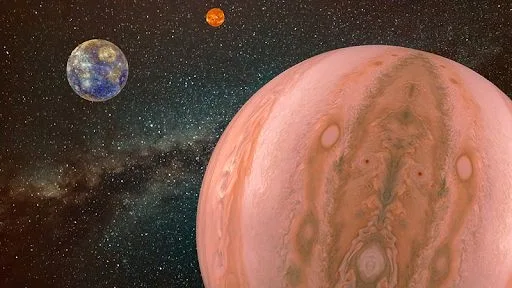In the Quest to Find Alien Life, Scientists Are Searching for Extrasolar Earth-Jupiter Duos
In the ongoing quest to find extraterrestrial life, scientists are increasingly focusing on planetary systems that resemble our own. One promising configuration is a system with two planets: an Earth-like world in the habitable zone, and a gas giant like Jupiter farther out.
Jupiter is thought to have played a crucial role in the formation of life on Earth. Its gravity helped to shield the early Earth from asteroids and comets, and it also played a role in the delivery of water and other essential elements to our planet.
"Jupiter is like a big bouncer," says astrophysicist Lisa Kaltenegger of the Cornell University Carl Sagan Institute. "It's out there, protecting the inner solar system from getting smashed up."
Now, scientists are using powerful telescopes to search for exoplanets, or planets outside our solar system, that could have similar Jupiter-like protectors.
"We're looking for systems that have both an Earth-sized planet and a Jupiter-sized planet," says Kaltenegger. "These are the systems that are most likely to be habitable."
One way to find these systems is to look for planets that transit their host stars. When a planet transits its star, it dims the star's light slightly. By measuring the amount of dimming, astronomers can learn about the planet's size and orbit.
The Kepler space telescope, which launched in 2009, has discovered thousands of exoplanets using this method. But Kepler is no longer operational, and its successor, the TESS space telescope, is focused on finding planets in the habitable zones of nearby stars.
"TESS is going to be great for finding Earth-sized planets," says Kaltenegger. "But it's not going to be as good at finding Jupiters."
That's where other telescopes, such as the James Webb Space Telescope, come in. Webb is designed to peer into the atmospheres of exoplanets and look for signs of life, such as oxygen or methane.
"Webb is going to be a game-changer," says Kaltenegger. "It's going to allow us to study exoplanets in more detail than ever before."
With the help of these new telescopes, scientists are optimistic that they will soon find evidence of extraterrestrial life.
"I think we're on the verge of a major breakthrough," says Kaltenegger. "We're closer than ever before to finding life beyond Earth."
In addition to looking for Earth-Jupiter duos, scientists are also looking for other factors that could make a planet habitable. These include the presence of water, a stable climate, and a protective magnetic field.
"There are a lot of things that go into making a planet habitable," says Kaltenegger. "But if we can find a system that has an Earth-like planet and a Jupiter-like planet, that's a good place to start."
The search for alien life is one of the most exciting and challenging scientific endeavors of our time. And with the help of new telescopes and technologies, we may soon be on the verge of making a discovery that will change our understanding of the universe.
I hope this article is helpful! Let me know if you have any other questions.
